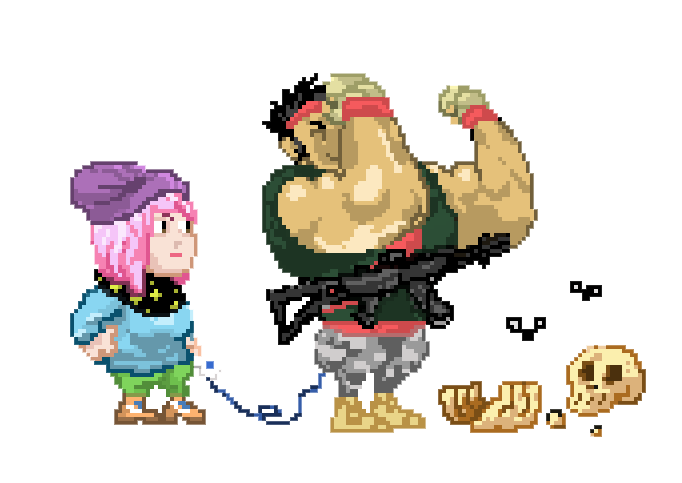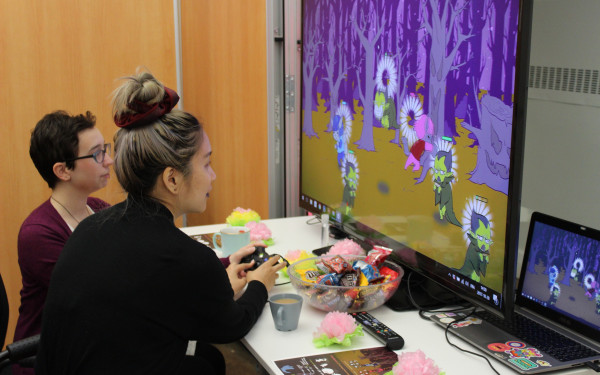The Pixel Is Mightier Than the Sword
Video Games Don’t Have to Be Violent—But “Indie” Isn’t a Total Fix
One of the more popular narratives about video games these days is that they’re kids’ toys at best and murder simulators at worst.
To be fair, there’s a lot going on in the mainstream media to back up the latter claim. Most popular games use belligerent conquest and visceral conflict as their primary motifs (see Grand Theft Auto, Angry Birds, or Chess).
Is that endemic to the medium, or merely overrepresented by the massive, international blockbuster factories? Does the emergence of the “indie” games scene—small, independent teams of creators publishing their own works—represent a sea change in how games are done?
Violence is in fact endemic to the current market, not the medium, but the “indie” scene is not some cleansing force for the pacification of games. Now, full disclosure: I’m a cofounder and board member of the Mount Royal Game Society, a nonprofit community group looking to engage new game makers; and an employee/member of KO-OP, a local video game company of sixish people. The views presented here are my own, though they are necessarily informed by and subject to a broader ongoing conversation.
In her feature “No Girls Allowed,” journalist Tracey Lien charts the medium’s journey from the arcades of the late 1970s into the living rooms of the early 1980s and headlong into the wall of the 1983 industry crash. The causes were multiple, but when the dust settled two years later, the industry had contracted by over 95 per cent.
Lien presents a convincing case that this commercial catastrophe paved the way for new market-driven approaches to game making. Whereas before the crash games were being marketed and played across generational and gender lines, after the crash they were packaged exclusively and aggressively for young males.
A closed circuit was formed: marketing, purchasing and production, all bound together in a profit-driven cycle. The industry found itself back in control by focusing its energies, budget and advertising power very specifically on boys and young men, to the often antagonistic exclusion of everyone else. Boys, according to the dominant ideology, love blowing shit up, and when all you produce is games about boys blowing shit up, that’s all that sells (and it sells a lot). QED.
Incidentally, anecdotal evidence also points to the mid-’80s as a turning point after which a huge number of women began leaving the tech industry. A correlation, naturally, but one that possibly indicates a broader cultural shift. The point being that for around the last thirty years, self-fulfilling market prophecies have fostered an environment in which technology is king, women are viewed as suspicious interlopers and games without explicitly tallied conquests are delegitimized.
When the “indie scene” gained major visibility and, paradoxically, became profitable (to some extent) in the mid-2000s, many people leapt at the promise of new creative freedoms. Surely indie games—like craft beer and indie music—would overthrow the industry and serve us all a more varied, richer and somehow more authentic experience. However, by merely existing in the same space of production and distribution as the larger companies, the majority of gaming startups (if they don’t fold in the first six months) find themselves subject to identical market forces—only they’re expected to deliver on a fraction of the budget.
Not only that, but shrewd salespeople have learnt to appropriate and cash in on the perceived legitimacy and cultural capital of “indie.” Combined, these factors have diluted the supposed counterculture—like craft beer, like indie music—which now more often than not enacts familiar tropes of conquest and violence that reinforce, rather than challenge, the status quo. Alternatives do exist, though as in any medium the fringe voices lack viability on the market and are generally dismissed or chased out. Disillusioned and/or disenfranchised makers are increasingly relying on self-published, socially active models of distribution (like the sneakernets, bulletin board systems and shareware disks of the ‘80s and ‘90s). Websites such as itch.io, GameJolt, Kongregate and even Dropbox and torrent sites serve as free hosting platforms, while curated lists such as Forest Ambassador, Warp Door, Games We Care About and the #altgames Twitter tag all perform a curatorial role for those interested in experiences that eschew the traditional narratives.
As a rule, violence is not endemic to the medium of video games. Just as importantly, though, the “indie” label no longer identifies, if it ever did, a diametrically opposed game-making philosophy, or even an ideology at all divorced from market-driven, conservative production.
Hopefully this brief overview has made it a bit more clear how misleading the (manufactured) “AAA vs. indie” divide is. To anyone interested in exploring the non-traditional, thought-provoking, absurd, personal, emotional and revolutionary side of video games, my one suggestion is to look anywhere but within the games industry.





